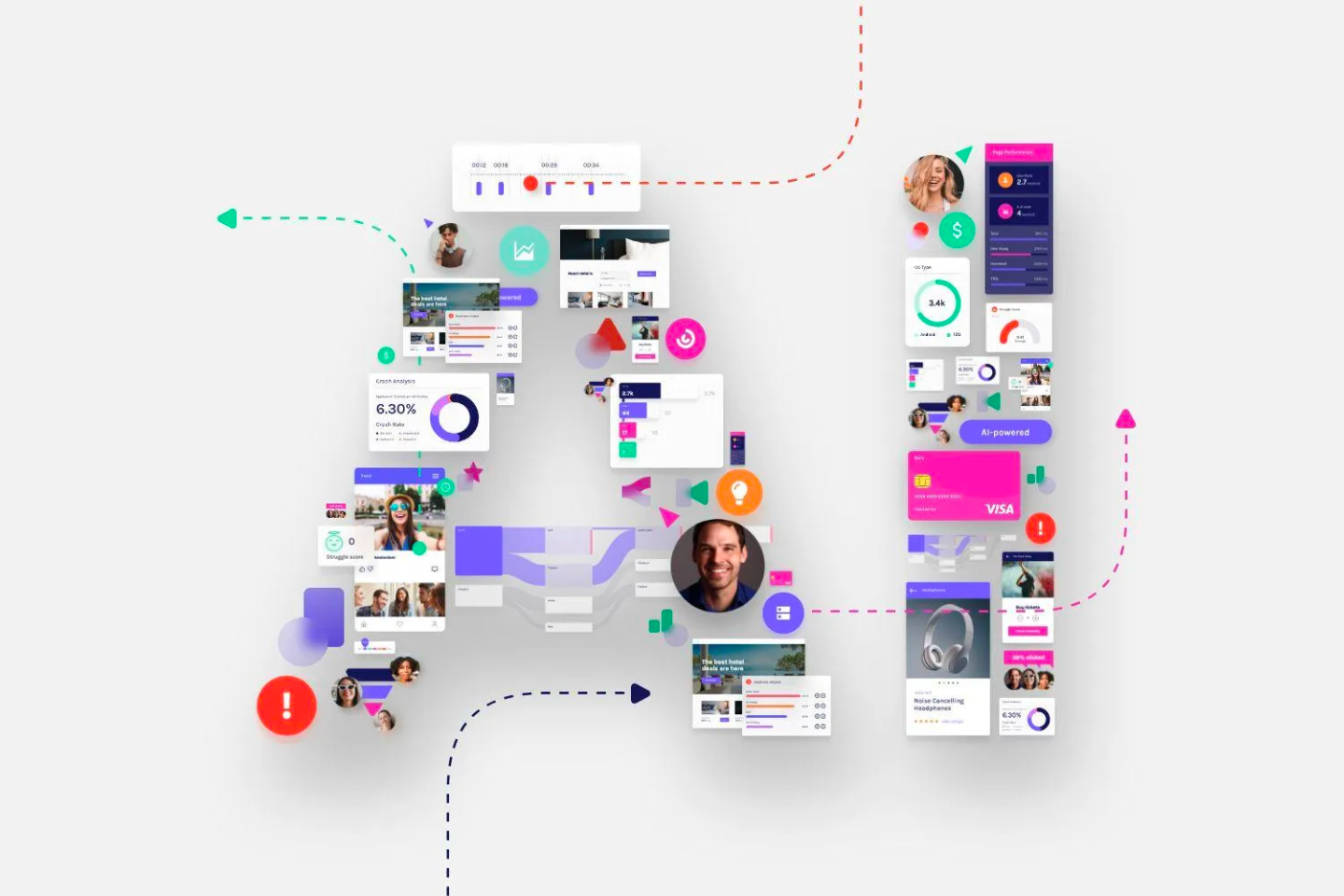
Autonomous CX: Generative AI is transforming digital customer journeys
We’re entering the golden age of AI-driven customer experiences. Chatbots serve as virtual assistants, scheduling appointments and reminding you to pay your bills. Predictive analytic platforms ensure surgical precision for targeted offers. And the market for CX management tools is surging towards a predicted $27 billion by 2026.
Yet despite the abundance of technology, organizations are still battling to translate bigger, better digital experiences into revenue. Over 70% of CX leaders struggle to design initiatives that increase loyalty and retention.
The ugly truth? Decision making hasn’t kept pace with the data. Organizations have an abundance of data about their customer interactions, yet most still depend on manual processes to access, understand and improve them. Optimization efforts subsequently get tangled up in silos, roadblocks and knowledge gaps, leading to frustrated teams and even more frustrated customers.
Today, AI is helping businesses to understand their digital customer experience. Tomorrow, AI will be managing it entirely with digital applications that can both self-analyze and self-correct. Glassbox is pioneering the future of digital customer experience, which we call Autonomous CX—and it’s going to change everything. Here’s what you need to know.
What is Autonomous CX?
Autonomous CX uses the most advanced AI to analyze, prioritize, redesign, test and deploy digital customer experiences without human intervention. This dramatically increases autonomy for internal teams and ensures the best experience for customers. So what does it actually look like?
Digital teams: Generative AI can create and modify content, including visual data and dashboards cultivated from infinite sources. It can also process and respond to human language. This enables teams to completely transform data analysis and decision making at every level. Instead of grappling with silos, wrangling dashboards or begging a data analyst for assistance, business users can interface with a generative AI chatbot to surface specific findings.
Customers: Apps and websites can respond instantly and automatically to customer experience issues, correcting sources of friction as they occur. Self-healing applications mean the best possible experience at every moment—no more waiting for the business to find and fix what’s getting in their way.
Self-correcting digital experiences for customers
U.S. businesses lose more than $35 billion annually in customer churn caused by avoidable CX issues. Autonomous CX mitigates data, process and resource limitations that most organizations face that ultimately impact customers’ digital experiences. Some of the bigger culprits include:
Limited contextual insights
Organizations consistently struggle to understand their customers in the context of a holistic, interwoven journey rather than disparate touchpoints. Data is often captive in a mishmash of tools and dashboards that disperse critical insights across multiple teams, so no one has the complete picture.
But in digital CX, context is critical. “Think of it like the butterfly effect. A specific error or struggle at any point can actually affect the entire experience,” says Yaron Gueta, Chief Technology Officer and co-founder of Glassbox.
This can wreak havoc on any and every aspect of the digital customer experience. Without connecting the dots, decisions are governed by guesswork, process of elimination, stakeholder politics and jostling priorities, as opposed to real customer behavior.
Lackluster technical personalization
Personalization is a non-negotiable when it comes to outstanding digital experiences, but doing it right requires a vast amount of nuanced, integrated, actionable data. It’s not just about delivering the right message or product to the right person on the right channel at the right time.
A great experience also means customers can easily and consistently perform the same combination of actions, regardless of their device. This poses a considerable challenge. Although responsive design already distinguishes between desktop and mobile devices, there are only so many variables it can realistically accommodate. The quality of your customers’ digital experience can be impacted by:
Operating system
Platform version
Screen size, resolution and PPI (pixel per inch/pixel density)
Browser (including version and engine)
Potential interference from VPNs and browser extensions
Other apps running in the background
The precise order of technical events that occur during an interaction
There are currently over 9,000 distinct devices, 21 different operating systems and eight major browser engines powering hundreds of browsers. That’s 63,000 possible browser-platform-device combinations and counting. In our own research, we even found the physical distance between buttons can impact conversion rates, indicating this is also a factor in usability.
This level of detail is excluded from both design and personalization efforts. Your site may deploy different layouts for desktop and mobile devices, but that’s not the same thing as a truly responsive digital experience that adapts to real-time customer behavior — not just hard-coded screen dimensions.
These limitations can have a serious impact, especially considering the strong correlation between technical performance and conversion: a 100-millisecond delay in website load time can hurt conversion rates by 7%.
Improvement lag
The best digital analytics technologies enable organizations to automatically capture every tap, click and swipe. However, the way teams actually work with that data behind the scenes is often manual and cumbersome. Just think about the typical process for optimizing digital customer experiences:
Analyzing marketing or product data
Deciding which A/B tests to conduct
Designing the test variants
Running an A/B/n test
Validating feedback
Handing over to product or development to implement changes
Meanwhile, your customers are either sitting and waiting, or more likely, moving on to a competitor who can offer a better experience. In fact, 53% of mobile visitors will leave a page that takes longer than three seconds to load.
Autonomous digital experiences
With Autonomous CX, websites and apps leverage generative AI to modify their own markup language and programming code, adjusting the interface in response to real-time customer behavior. Think digital customer experiences that auto-enhance interactions for any individual.
While standard CX tools like heatmaps and session replays already identify rage clicks, page refreshes and other signs of struggle, autonomous CX goes even further by addressing friction as it occurs.
For example, let’s say someone abandoned a form halfway through due to unclear language or a particular field getting pushed below the fold. Autonomous CX will simplify the language and reconfigure the layout for the customer’s precise screen dimensions, self-optimizing on the spot.
Rapid insights for teams
The majority of U.S. consumers (54%) say customer experience at most companies needs improvement. This is understandable. When data analysis, testing and optimization depend on manual processes, customers often have to settle for a lackluster experience — not bad enough to warrant mobilizing the engineering team, but not fast enough to improve in real time.
Ironically, improvements can even be hindered by the tools themselves. Traditional analytics tools take time to master and are often the domain of data or technical teams to manage, putting a major barrier between those controlling the data and those needing the insights to drive the digital business.
Modern customer journeys are complex, and insights are often difficult (and time consuming) to uncover. This doesn’t just hinder analysis, but decision making. Unless you’re a power user and know a particular tool like the back of your hand, you may spend just as long sifting for actionable data as you do strategizing what to do with it. Insights can also get obstructed by inconsistent data practices across multiple teams, so no one is speaking the same language.
Generative AI doesn’t just consolidate information from unlimited sources. It can also interface with human language and surface insights from a simple, conversational interface, so you don’t need to manually navigate dashboards and filters. Removing the barrier to entry around critical insights, Autonomous CX dramatically democratizes data and increases autonomy for decision makers at every level.
What’s next
Like it or not, outstanding digital experiences are no longer a competitive advantage but a baseline expectation. To keep pace with customer expectations—let alone stand out—companies need to offer more than “lack of friction.”
Real CX differentiation comes from eliminating friction externally and internally.
"Autonomous CX is a game-changer in the CX domain,” says Gueta. By leveraging generative AI to respond to real-time customer behavior and simultaneously surface critical, contextual insights across multiple teams, Autonomous CX will completely transform individual interactions and CX as a whole.








